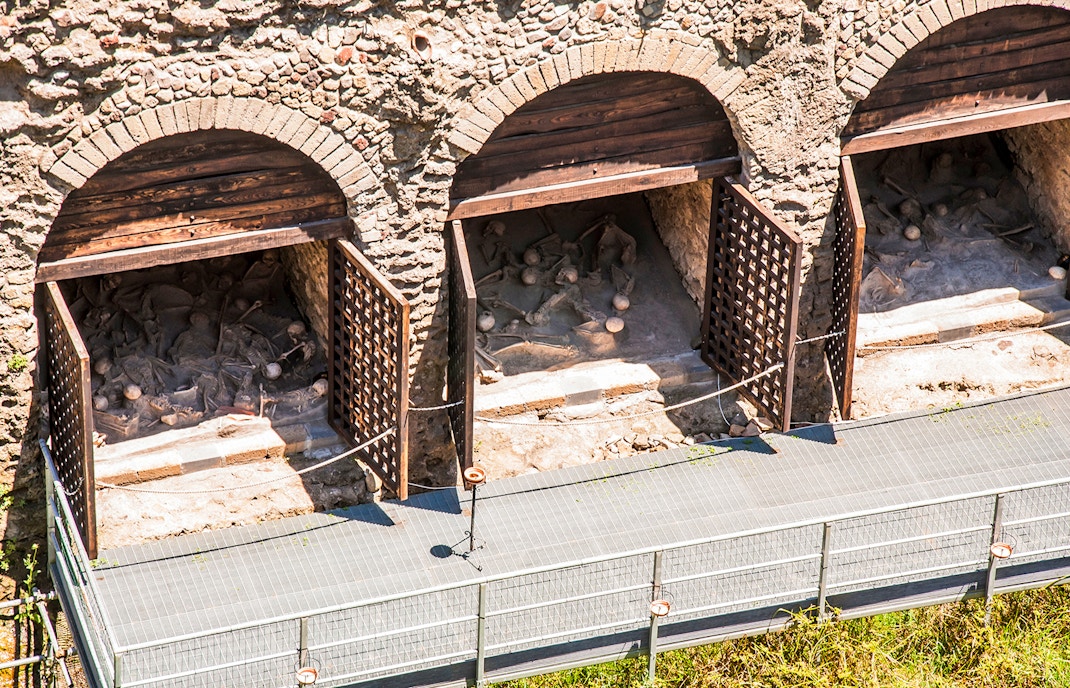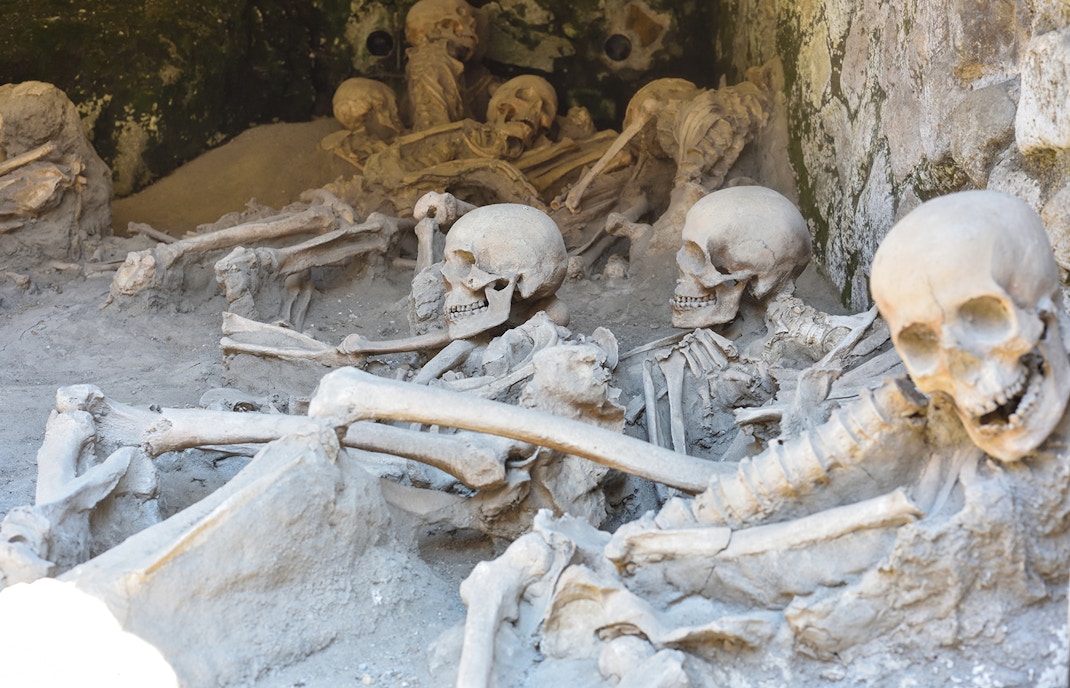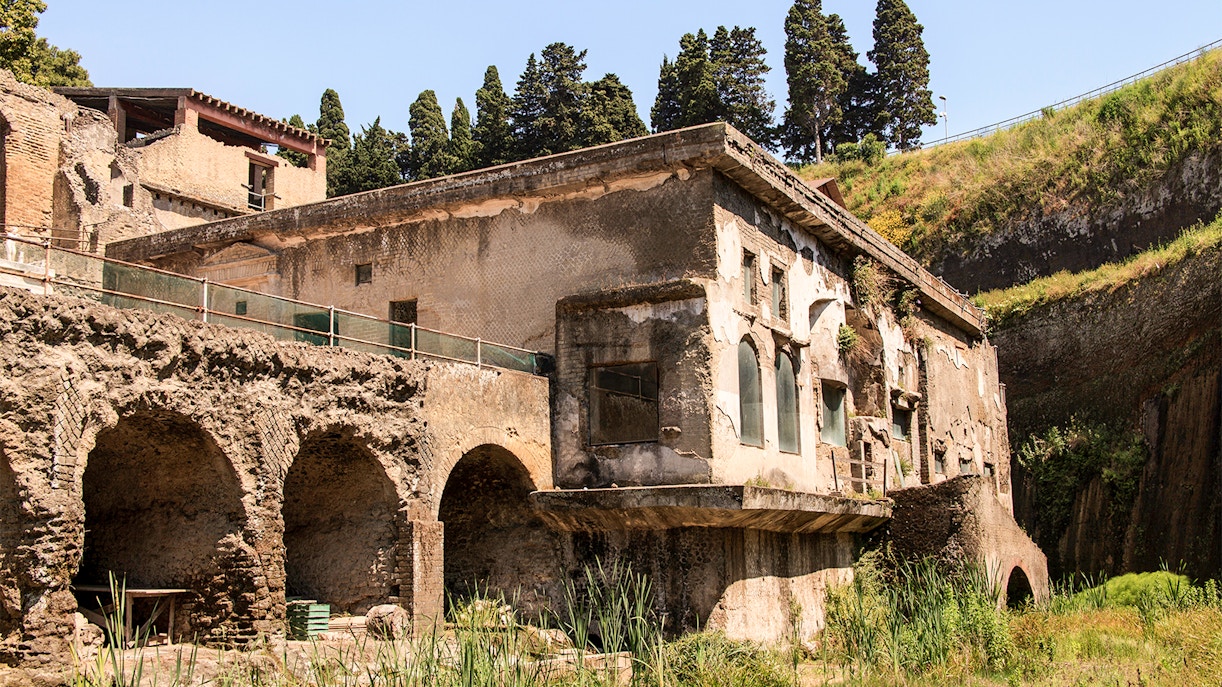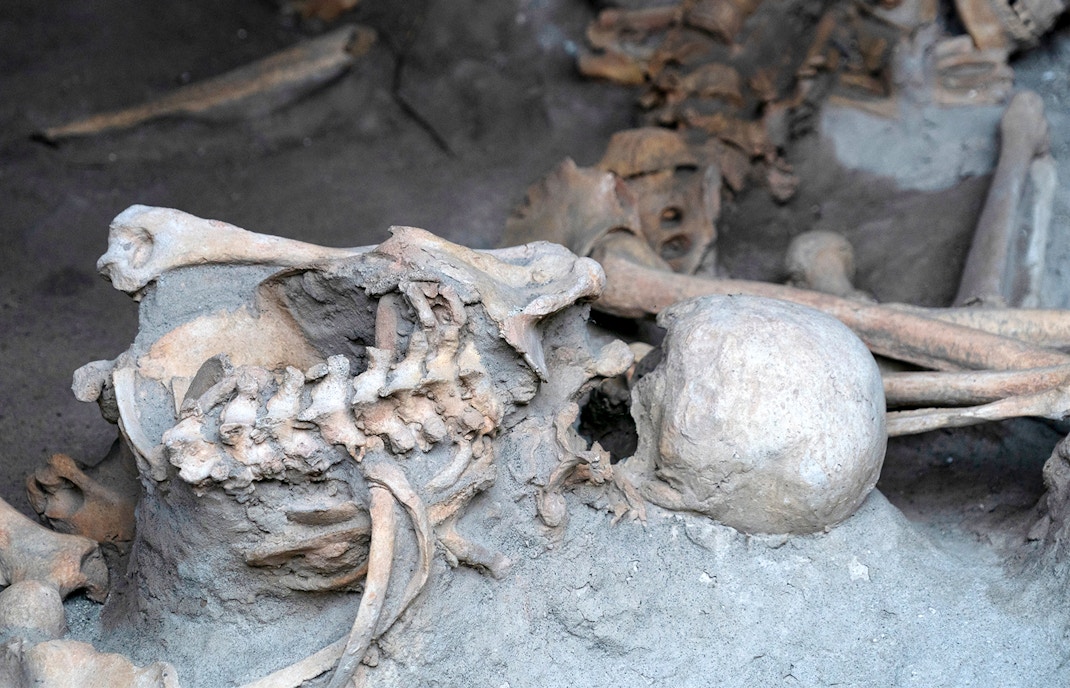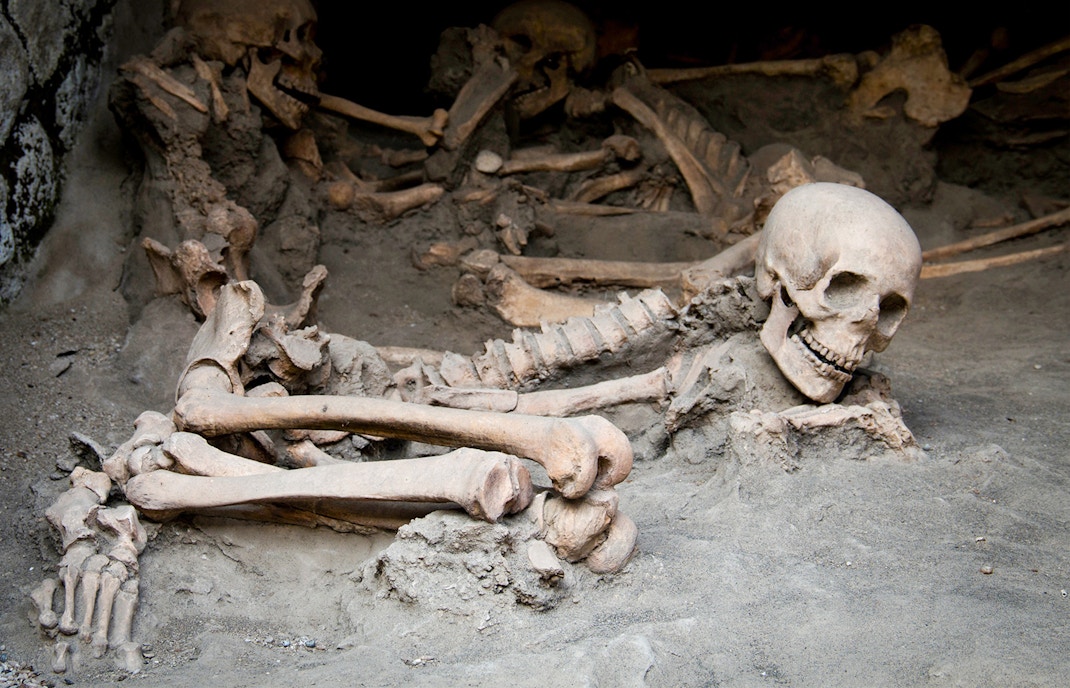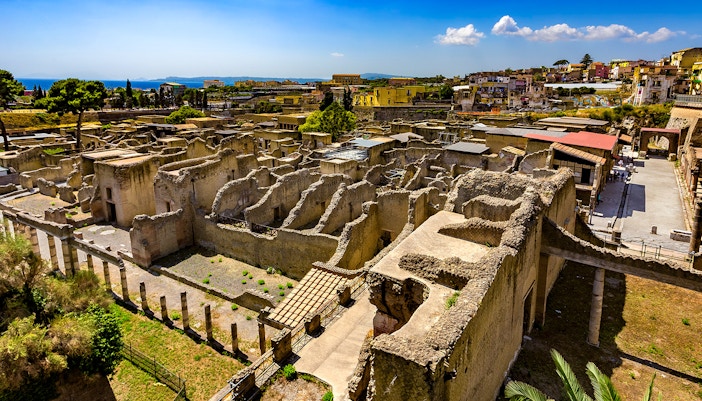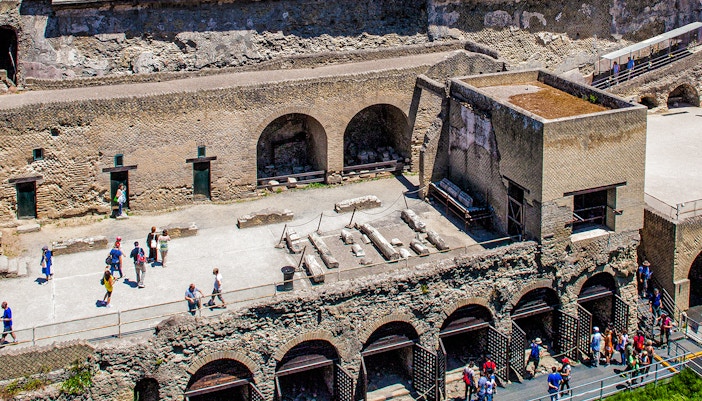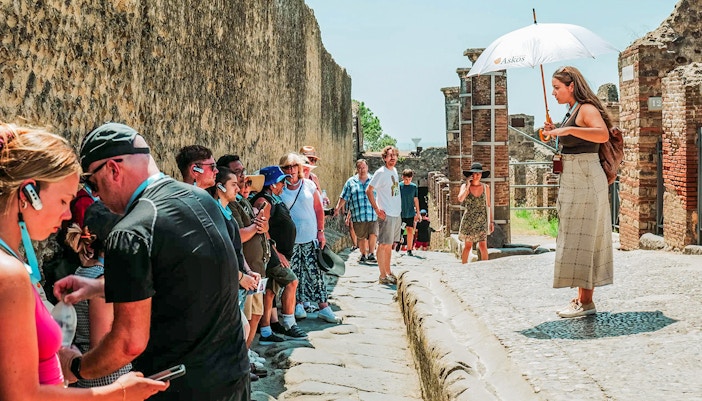Same eruption, different outcomes: Vesuvius’ outburst on Herculaneum was a stark contrast to its aftermath in Pompeii. In Herculaneum, a debris cloud assumed to be around 815℃ enveloped the town in a pyroclastic surge. Mud, gas and hot ash sped towards Herculaneum. Successive pyroclastic flows like this covered the city in layers of ash, blanketing everything in its wake. In a matter of minutes, life came to a standstill. Paradoxically, the pyroclastic flows that snuffed the life out of Herculaneum also led to its incredible preservation, with some structures being buried to a height of a three-storeyed building.
While in Pompeii the people were smothered by ash and pumice stones, with some bodies ending up entombed in casts by calcified ash, only skeletons remained in Herculaneum.
